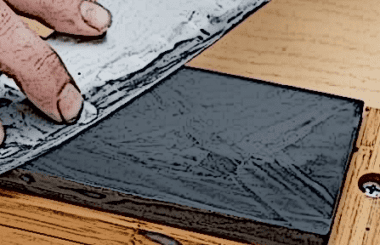Mastering the Edge: A Comprehensive Guide to Sharpening Knives for Various Blade Shapes

Mastering the Edge: A Comprehensive Guide to Sharpening Knives for Various Blade Shapes
Introduction:
The art of sharpening a knife is a fundamental skill that every outdoor enthusiast should master. A sharp knife not only enhances cutting efficiency but also ensures safety by reducing the risk of slips and mishaps. The correct sharpening technique varies based on the blade shape, and understanding these nuances is crucial for maintaining a keen edge. In this guide, we will explore the step-by-step process of sharpening knives for different blade shapes, ensuring that your outdoor tools remain sharp and ready for any adventure.
Sharpening a Drop-Point Blade:
Gathering Materials:
Sharpening stone (coarse and fine grit)
Honing rod
Lubricating oil or water (depending on the type of stone)
Angle and Technique:
Lay the blade flat against the sharpening stone.
Maintain a consistent angle, usually around 20 degrees.
Using smooth, controlled strokes, move the blade across the stone, starting from the base to the tip.
Repeat on the other side of the blade to ensure even sharpening.
Honing:
After sharpening, use a honing rod to refine the edge and remove any remaining burrs.
Hold the rod at a slight angle and run the blade along its length, alternating sides.
Sharpening a Clip-Point Blade:
Materials:
Same as for the drop-point blade.
Angle and Technique:
Focus on the tip when sharpening, as the clip-point design requires attention to the fine point.
Use controlled strokes, applying slightly more pressure on the convex side of the blade.
Honing:
Pay extra attention to honing the tip to ensure optimal sharpness.
Sharpening a Tanto Blade:
Materials:
Same as for other blade shapes.
Angle and Technique:
Sharpen each edge separately, as the tanto blade typically has two distinct angles.
Use a consistent angle for each edge, ensuring that both sides are evenly sharpened.
Honing:
As with other blades, use a honing rod to refine the edges and remove any burrs.
Sharpening a Serrated Edge:
Materials:
Ceramic rod or tapered sharpening rod.
Sharpening stone (for maintaining the straight edge, if applicable).
Technique:
Place the rod between the serrations and follow the contour of the edge.
Focus on the areas near the base of the serrations where they meet the straight edge.
Honing:
For a combination edge, use a honing rod to maintain the straight section.
Sharpening a Wharncliffe Blade:
Materials:
Sharpening stone.
Angle and Technique:
Lay the blade flat on the stone, as the Wharncliffe blade has a straight edge.
Maintain a consistent angle, typically around 20 degrees.
Honing:
Utilize a honing rod for the final touch, ensuring a sharp and stable edge.
Conclusion:
Whether you’re a seasoned outdoorsman or a novice camper, mastering the art of sharpening knives for different blade shapes is a valuable skill. Regular maintenance ensures that your knives remain reliable companions in the great outdoors, ready to tackle any cutting task that comes your way. By following these guidelines, you can achieve and maintain the optimal edge for your specific knife, enhancing both its performance and longevity.

